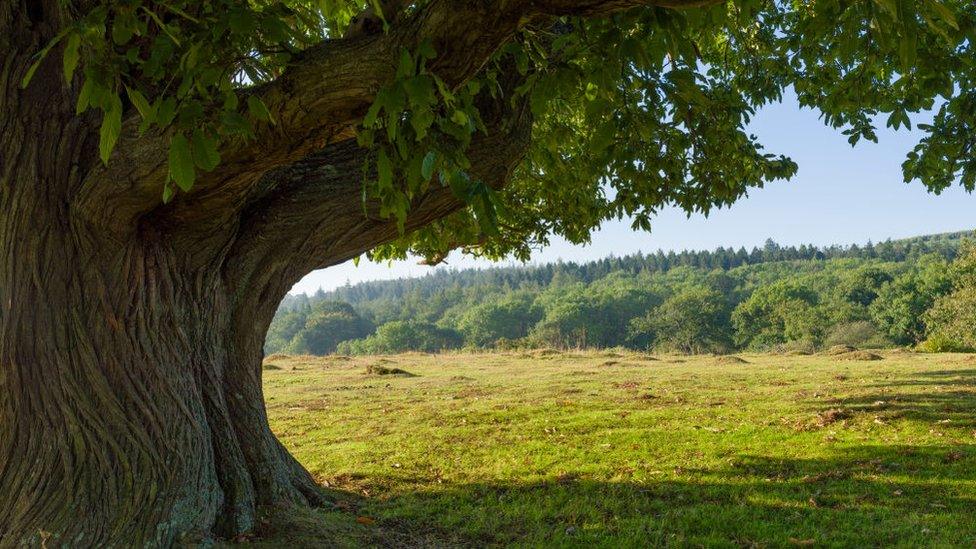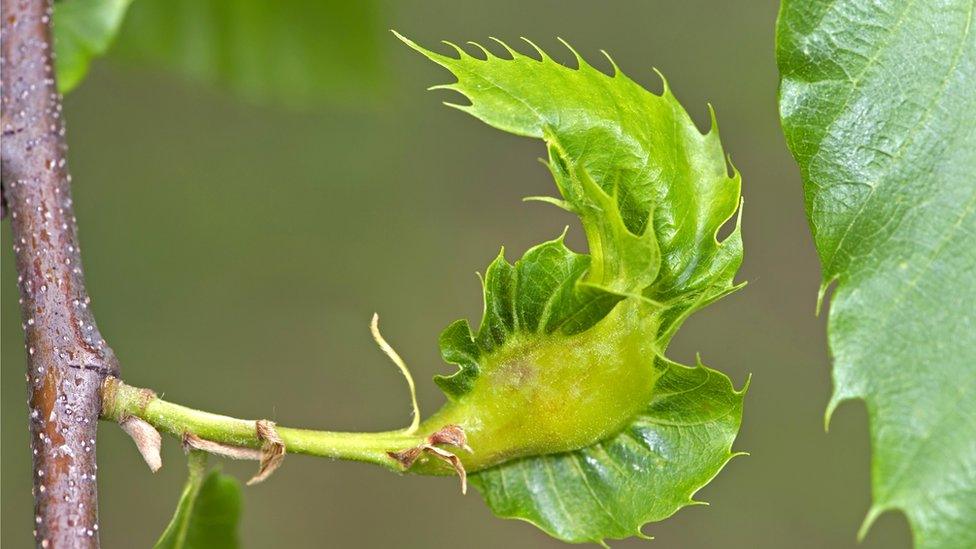RHS seek volunteers to monitor sweet chestnut trees for pests
- Published
- comments

Sweet chestnut trees can live up to 700 years
Citizen scientist volunteers are needed to help monitor sweet chestnut trees for pests and disease, the Royal Horticultural Society (RHS) has said.
Sweet chestnut trees or Castanea sativa can be found across parks and woodlands all over the UK.
They provide food and shelter to all sorts of wildlife, but are being under threat from problems - the oriental chestnut gall wasp (OCGW) and a fungus called chestnut blight.
The RHS gardening charity along with the Animal and Plant Health Agency, Forest Research and the Department for Environment, Food and Rural Affairs want people to look for signs of these two threats.
What does a sweet chestnut look like?

Sweet chestnuts have long green leaves and produce edible nuts
Sweet chestnut trees have long, green leaves which have pointed tips and toothed edges.
In the early summer they are covered with yellow catkins while in autumn the leaves turn golden before falling.
They also have nuts which are encased in a spiky shell much like conkers which come from the horse chestnut tree. Unlike horse chestnuts or conkers, sweet chestnuts are edible.
Sweet chestnut trees can grow to 17-22 metres and can live for up to 700 years if they remain healthy.
What should people look out for?

Gall of a oriental chestnut gall wasp
The RHS said monitoring the trees does not require any specialised knowledge.
It wants people to look for signs of the fungus or wasp, take pictures and send them to a government website called TreeAlert.
A tree with the fungus might have cracked or sagging dead bark with discolouration or bright orange fruiting bodies.
Signs of the wasp includes distorted leaves or buds with growths called galls.
Fresh galls can be bright green to rose pink or red, but turn brown over time.
They can stop the tree growing and prevent it from producing nuts.
In high numbers the wasp can make the tree more vulnerable to tree blight which can eventually kill it.
The Check a Sweet Chestnut project is trying to recruit volunteers as part of National Plant Health Week, which runs from 8-14 May.
People are being encouraged to report healthy trees too so that scientists can work out how many trees are affected.
The data will be used to create a map of the health of sweet chestnut trees in the country which should help with monitoring other emerging diseases, the RHS said.
Nicola Spence, UK chief plant health officer, said: "Encouraging the public to be good plant health citizens and report disease sightings is absolutely crucial if we are to minimise the risk to our cherished treescapes."
